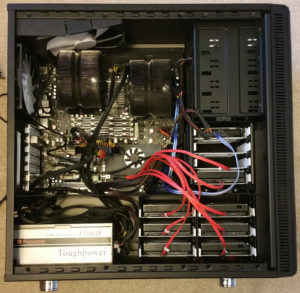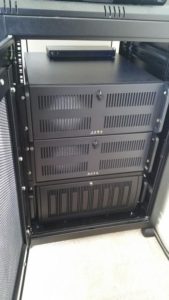I seem to be constantly trying out different ways of syncing data. I have had no end of problems with unison. Apart from being slow getting build versions to match is a constant source of frustration.
However, I have found Syncthing, which seems great so far. I have owncloud, which is great for syncing documents; think Dropbox that you own. However I have some data sets that are very large and don’t change much. Owncloud would just get clogged up looking after these. I could use rsync, which is fine, however syncthing has some nice additional features.
Syncthing is a bidirectional sync tool, that can also do versioning if you want it to. It works by running as a web service on your computers and is accessible via a web gui. It keeps directories up to date over a number of computers, there is no copy of the files in the cloud, unless you put one there. So if you delete everything off one computer it will disappear from them all (eventually). It plays well with dynamic IP addresses and firewalls. All traffic between the computers is encrypted, and it is fast. It doesn’t use up too much resource, and I set the sync frequency on my files for 1hr as they are unlikely to change that often, and also only I use them. These are large data sets of source material mainly, and photos that I edit on two computers.
Setup is pretty straightforward, the most tricky bit being auto starting the service on different computers/operating systems. It works well.


